The curious Victorian obsession with cleanliness – and the exotic

Sniff deeply. That’s Turkish rose, jasmine, orris root, resins, musk – the smell of the Victorian bathhouse. In the 1870s, when the barber William Penhaligon created his Hammam Bouquet eau de toilette (still on sale today) in the three-storey Jermyn Street Hammam where he dressed hair and beards, the seductive, social, masculine world of the Turkish bath was all the rage.
Jermyn Street’s Hammam may be long gone, but the great spa town of Harrogate in Yorkshire has managed not only to hang onto its fabulously-decorated Victorian Turkish Baths but to do a full-scale £300,000 restoration. They claim to be most complete set of such baths in the country and throw open their elegant doors for Heritage Open Days this month; a reminder of the happily compatible 19th-century twin passions for cleanliness and the exotic.
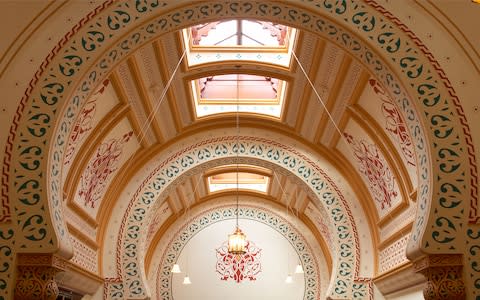
It wasn’t the first craze for far-flung customs and design in Britain. As the proto-empire began to spread its tentacles across the globe in the 17th century, back came tea and coffee and muslins and silks and porcelains and tiles – and bathhouses, too, but the latter gradually degenerated into physically and morally grubby examples of 18th-century decadence.

Straitlaced Queen Victoria took one look at the outrageous Brighton Pavilion, built by George IV in the Regency period and influenced by India, the Middle East and China, stripped out its contents and sold it to the city of Brighton - luckily it’s been magnificently restored.

Her bracingly confident subjects had another go at exotic, inspired by exploration and travel to use eclectic building styles, just as a national programme began to provide public facilities for swimming and washing, starting in Liverpool and Manchester. They also built their own unashamedly Orientalist bathhouses and mansions, bridges, garden pavilions and theatres.

London’s wildly over-the-top sewage pumping stations either side of the Thames at Crossness and Abbey Mills, the latter celebrating its 150th birthday this year, are Venetian-Byzantine-Gothic and Moorish-Gothic respectively. Ashton under Lyne opened its Italianate swimming baths (now workspaces) in the 1870s. Queen Victoria’s son, the Duke of Connaught, was a fan of Indian style, influencing the building of the Durbar Hall at Osborne house in the 1880s.
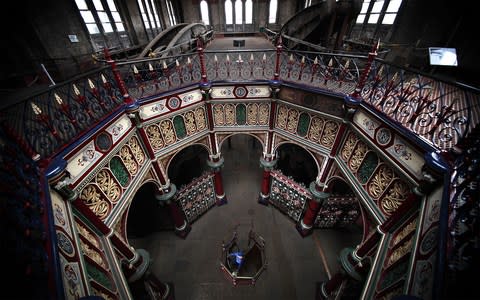
Further down the supply chain, manufacturers such as the tile makers Craven Dunnill and Maw & Co in Jackfield, Shropshire, produced ranges of Islamic and Moorish products. ‘In the late nineteenth century it was fashionable to travel to Islamic regions,’ explains senior curator Georgina Grant, ‘and manufacturers fulfilled the resulting demand for products - on a vast scale.’ Craven Dunnill tiles lined Nevill’s 1895 New Turkish Bath on Old Street, London.
Harrogate’s Turkish baths are benefitting from the contemporary spa boom and offer their own eastern-style rub down, plunge pool and post-treatment relaxation in a tiled aroma room.
Who needs to go anywhere to see exotic architecture? It’s all right here under your nose.
Turkish Baths Harrogate, Parliament Street, Harrogate HG1 2WH, 01423 556746; turkishbathsharrogate.co.uk offers days for ladies’, men’s and mixed bathing, £18-29.50 and 45-minute weekday tours £3.75. Free Heritage Open Days tours Sunday September 9 (3pm to 5.30pm) and Thursday September 13 (6pm to 8.30pm).
10 of the most exotic remnants of the 19th century
Egypt Garden, Biddulph Grange, Staffordshire
Sphinxes guard the door of an Egyptian temple set into cleverly clipped yews, in one of several exotic gardens created by Victorian plant collector James Bateman to house his specimens from around the world.
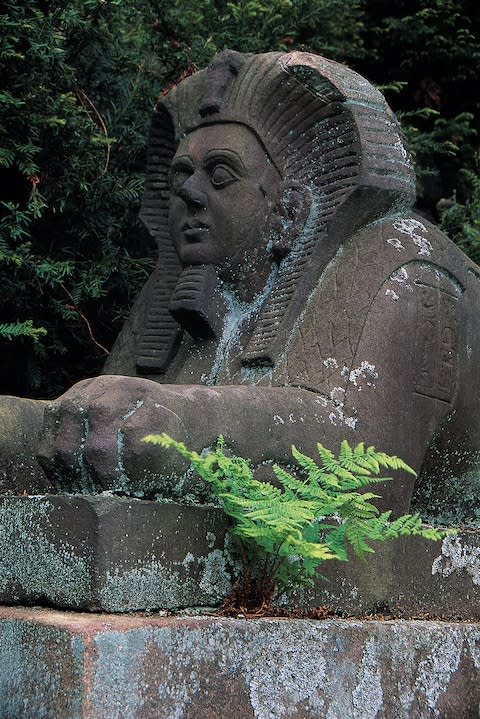
Arab Hall, Leighton House, London
Victorian artist Frederick Lord Leighton’s shimmering blue interpretation of a Moorish bath house, using his collection of Iznik tiles, arranged and supplemented by William de Morgan.
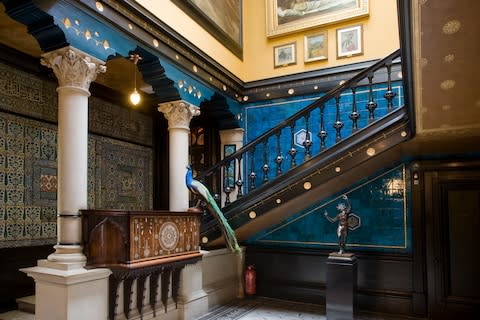
Durbar Hall, Osborne House, Isle of Wight
A confection of intricate white icing designed by Rudyard Kipling’s artist father, Lockwood, and carved by the Punjabi master craftsman Bhai Ram Singh, with fabulous inset Peacock Throne.
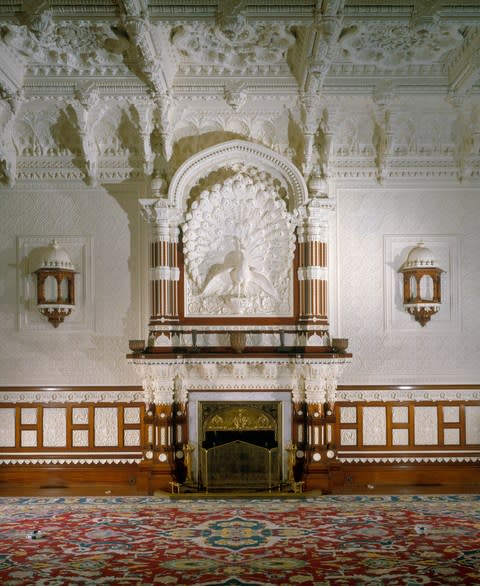
This dazzling façade (now holiday flats) appeared just before Victoria was born, a craze triggered by Napoleon’s campaign in Egypt.

Jackfield Tile Museum, Shropshire
This village near Ironbridge on the River Severn, had clay and water and housed tile makers Craven Dunnill and Maw & Co. The collection includes Islamic-style tiles and William de Morgan specimens in the John Scott Gallery.
Porchester Spa, Bayswater, London
Opened in 1929 as the Paddington Central Baths, complete with a statue of a green bathing beauty overlooking the tiled bathing area. Now upgraded, but still affordable.
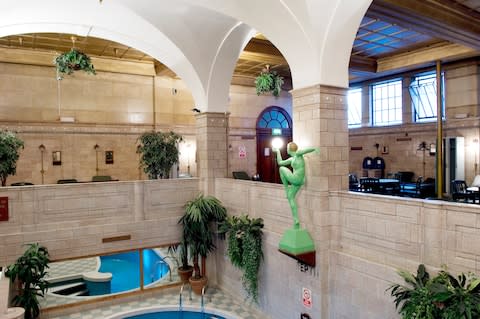
Abbey Mills and Crossness Pumping Stations
These surprising buildings, whose joyous details belie serious sewage pumping capabilities, are not easy to see. Crossness opens September 23 for Open City, but its engine house is off-limits because of asbestos. Abbey Mills is already booked for HODs and Sewage Week next April. Keep looking.
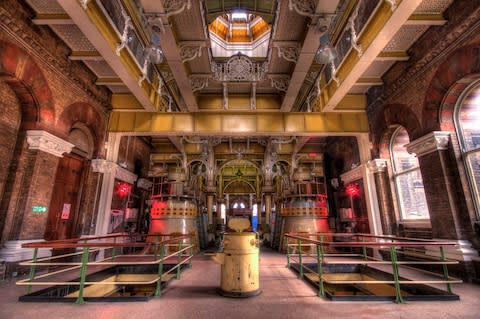
Turkish Bath, Cragside, Northumberland
Engineering genius William Armstrong added an exquisite bathhouse to his state-of-the-art home.
Egyptian Balcony, Harris Museum and Art Gallery, Preston, Lancashire
The building dates to 1893 but the Egyptian murals were painted by John Somerscales 1909 to 1913. They’re Victorian in spirit, though. September 8 10am to 7pm.
Victoria Baths, Chorlton-on-Medlock, Manchester
The winner of BBC2’s Restoration (2003) is open for tours, but aims to re-launch its swimming pool and Turkish baths public use. Heritage Open Days Saturday 8th and Sunday 9th September, 11am to 4pm, free admission, guided tours £5, under-16s free.


